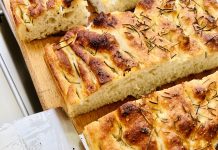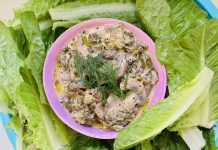How tasteless and boring some newspapers, sites and magazines sometimes make Greek recipes seem. Bam, bam, bam…
On the contrary, some greek and international food blogs portray a more charming picture. They include original and beautiful – not found copyright-free on the internet – photos showing their lands and efforts, add a relevant comment and a personal touch or a rare ingredient or an unusual detail which makes them shout, ‘Eureka! In a nutshell, blogs usually contain recipes written with more flair and creativity which sets them apart from the dry setting-down of ‘ingredients’ and ‘method of preparation’ that most sites succumb to.
So, during my morning exotic, internet promenade through the cooking sections of The Guardian, NYT, Gourmet, Food and Wine etc. and sometimes in Greek cooking sites, too – excluding certain exceptional featured articles, of course – I stumble across boringly written, randomly published Greek recipes…although, to be fair, the same can be said for Italian recipes for Carbonara, for example, which seem dull and uninspired on various non-italian sites, an Italian will almost always write more passionately about his beloved pasta .
I also often wonder…has anyone from the Cultural or Financial or Agricultural Development or Employment ministries ever considered organising a coordinated effort to meet up with international gastronomic journalists once a year, in order to make them acquainted with our basic products, our chefs, our lands and producers, our traditions? That way, they would not only start mentioning Greece more often, but they would share our recipes with the world in an extra inspired way which, in my humble opinion, you can’t do properly unless you explain about particular Greek products and their geographical origin or some unique methods of cooking these products . Have we ever, as a country, really hosted and treated these journalists to the delicacies and flavours of Greece?
Rant over! No more complaining! On to a completely different topic now!
There is a brilliant, small secret to ‘our’ galaktoboureko ! I always remember it and this is what I look for when I eat it.
The only difference between my simple family recipe for this particular dessert and others for galaktoboureko, is this: plenty of cinnamon sprinkled between the first two layers of fyllo pastry, near the bottom of the baking tray, along with the butter. Simply thinking of the word ‘sprinkled’ excites me!
Galaktoboureko also needs a fair amount of lemon zest and it’s precisely this combination – lemon-cinnamon – which makes this recipe out of this world! (Everyone knows how I adore lemons, but I also love cinnamon. I sprinkle a pinch of cinnamon over the ground coffee in my coffee maker every day, and it tastes less boring, more aromatic and delicious).
But the other secret is that galaktoboureko is not difficult to prepare. I first started making it in 1992, when my Danish husband tried it, sweet and cool, one summer evening, under a plane tree in Agio Kosma in Arcadia, accompanied with a glass of chilled water. And he went bananas! So, since then, he’s been demanding I go through the trouble of making it…
GALAKTOBOUREKO
• 4 cups milk
• ¾ cups sugar
• ¾ cups semolina
• 3 cinnamon sticks
• 2 teaspoons cinnamon powder
• the zest of one lemon and the peel of another
• a pinch of salt
• 5 eggs, lightly beaten with a little vanilla essence
• 200 gr/7.05 oz. melted butter
• 1 packet thin fyllo pastry (for desserts)
Preparing the syrup: in a saucepan, simmer 1 cup of water and 1 cup of sugar with the peel of one lemon, 2 cinnamon sticks and 1 Tablespoon lemon juice until it begins to thicken slightly.
Stir the milk, sugar, semolina, 1 cinnamon stick, lemon zest and pinch of salt in another saucepan until this, too, starts to thicken, about 5 minutes.
Remove from the fire and take out the cinnamon.
Cover the milk mixture with greaseproof paper cut out in the shape of the saucepan, so no crust forms.
Add the eggs only when the mixture is fairly cool, and mix well.
Butter a baking tray, lay down the first 2 layers of fyllo pastry, making sure to brush each one with melted butter and don’t forget to sprinkle cinnamon.
Continue laying down half of the fyllo sheets for the base (at least 4).
Pour in the milk mixture.
Continue covering the mixture with the rest of the fyllo pastry layers, buttering each one, even the last.
Carve out rhombus shapes in the top layers of fyllo.
Sprinkle with water so the top crust is crunchy.
Bake at 180 C/356 F degrees for 45 minutes.
When it’s completely cooled down, pour the syrup over the pie.
When, after 1-2 hours, you remove the first piece, the syrup will have reached the bottom layers of fyllo, which will be darker because of the cinnamon, and every bite will be perfect till the end!
This weekend, get into the kitchen!


























My Family Loved it. I am definitely sharing Guys, Thanks For sharing this Great Recipe. this recipe and this website with my friend. Hope they also love it. Thank you again for sharing such a great recipe.